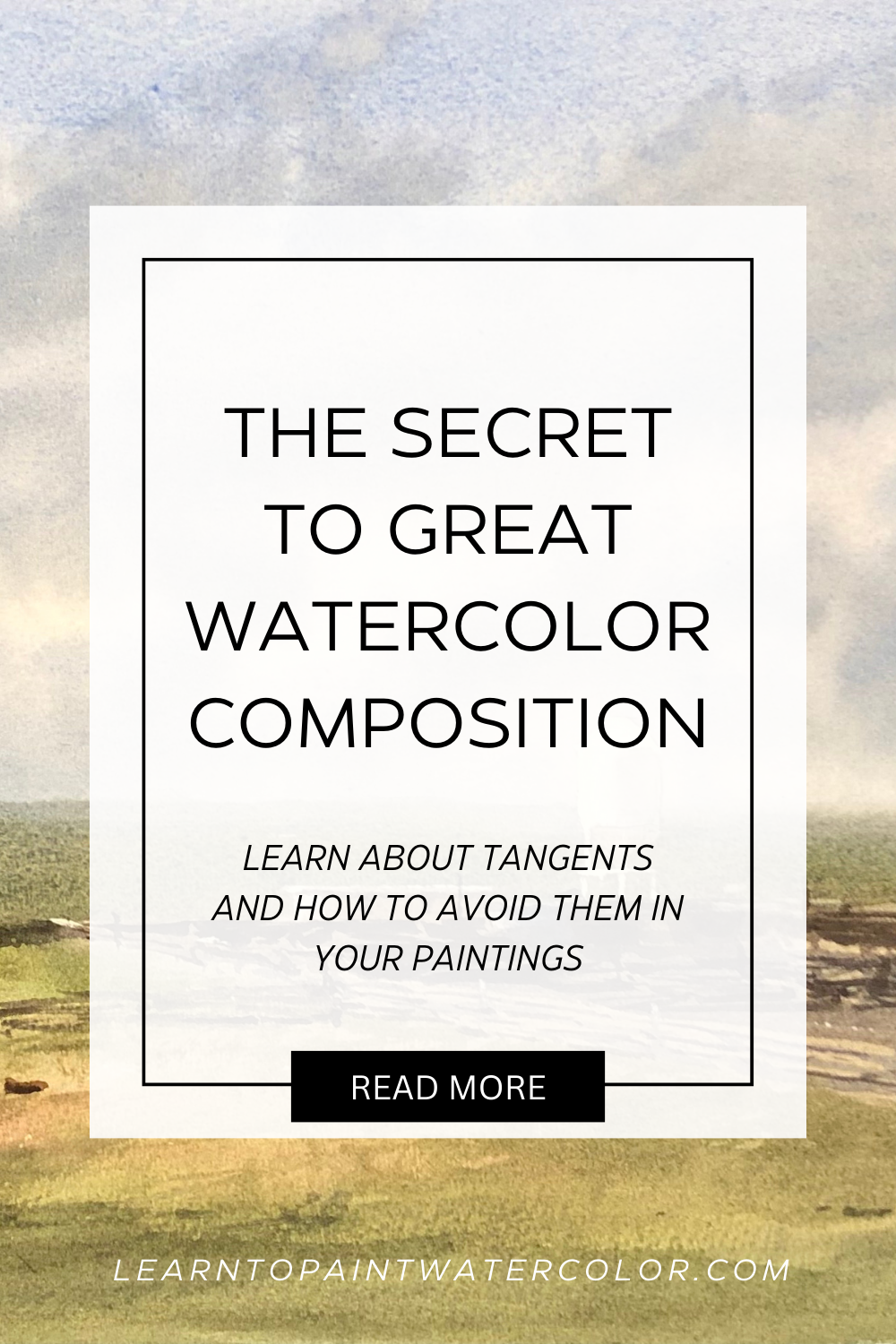The Secret to Great Watercolor Composition
Sep 18, 2023Have you ever completed a watercolor painting and stepped back to assess your work to find that you're not happy with the results - but you really have no idea why?
There's just something awkward about it, you think, something not quite right.
It's likely the problem has to do with tangents.
Fix the Watercolor Mistake You're Making Without Realizing it
When we think of a tangent, we think of someone talking way too much, giving way too much detail about something.
And I will try not to do that here. I'll keep it short and sweet with just the right amount of information about this tricky concept.
Enjoy this Blog Post? Like this Pin!
What is a Tangent When it Comes to Art Composition?
So what is a tangent?
A tangent is when two lines in a painting (or photograph, drawing, etc) touch each other in a way that causes spatial ambiguity. It can happen when two edges line up in a way that obscures the shape or edge of an object. It can also happen when angles and lines align in an unusual way that makes you feel uneasy.
Sometimes it is not a super obvious problem, but even when it is subtle, it can throw off an otherwise great painting.
5 Types of Tangents to Look Out For in Your Paintings
There are several types of tangents, and I will cover 5 of the most common ones here.
1. Fused Edge Tangents
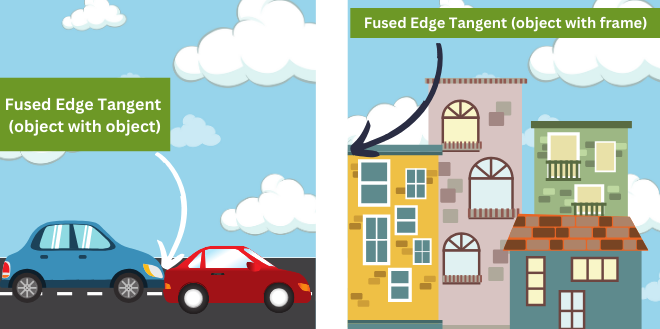
These tangents occur when the edges of objects are obscured or run parallel with another edge.
In the first picture, you see two cars whose edges are touching. While this happens all the time in real life (you might even snap a reference picture with something like this going on), it will not make for great composition in your watercolor painting. It is your job as the artist to rearrange the objects so their edges are not too crowded and composed in an appealing way.
In the second picture, the very edge of the yellow building meets the edge of the frame. Consider the edges of your watercolor paper as edges too. This doesn't mean you can't paint right up to the edges of your painting. It is mostly awkward looking when the building (or other object) ends right at the edge of your painting and is facing the viewer straight on (like our example).
Note the difference in my painting below. Instead of the edge of the building on the left lining up exactly with the edge of my watercolor, I brought it forward and gave it depth. The side of the building is at the edge and the angle of the roof helps with the composition too. I did a similar thing on the right side of the painting. If you can position objects at an angle or give the impression that they continue off the page, this will often solve your problem.
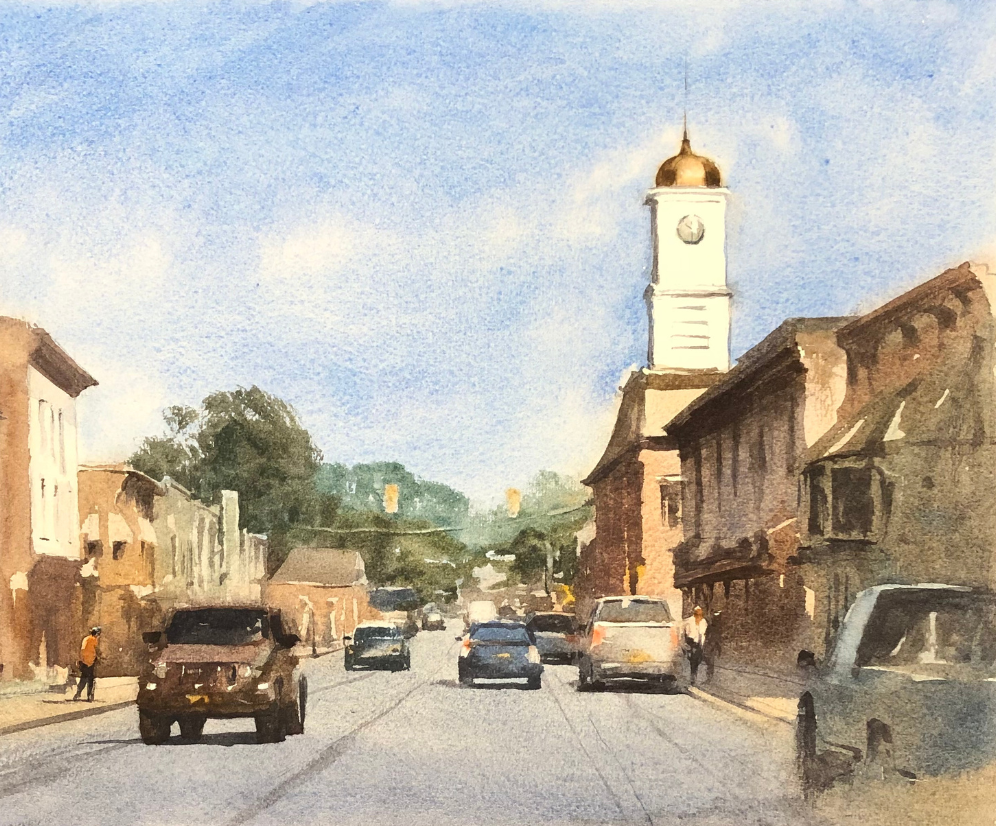
2. Hidden Edge Tangents

Hidden edge tangents occur when the edge of an object is obscured by another object. This makes for an awkwardly crowded and unclear composition. Trying to make sense of the objects, you might try to see them as one. Avoid the edge of any object being completely hidden so that you don't run into this problem.
3. Split Apex Tangent

A split apex occurs when a vertical line (or lines) intersect a shape to create symmetry that is not pleasing to the eye or is distracting to the main idea of the scene. If you notice that one part of your painting is feeling too evenly spaced, you might have a split apex tangent.
4. Antler Tangents
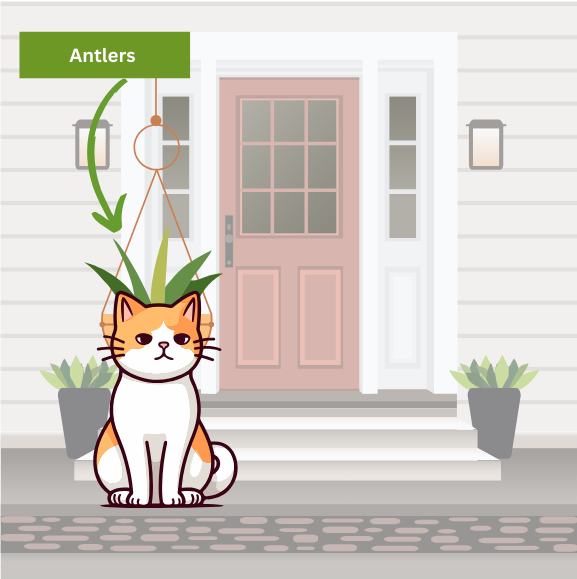
Antler tangents occur when you paint one object in front of another the two objects fuse together, make an odd shape, or look like they have a relationship that you didn't mean for them to have. Like, if branches look like they are coming out of a figure's head, they might look like the person has antlers.
In the example above, the plant looks like it is growing out of the cat's head. This kind of ambiguity is not visually pleasing and should be rearranged.
5. Skimmed Line Tangent
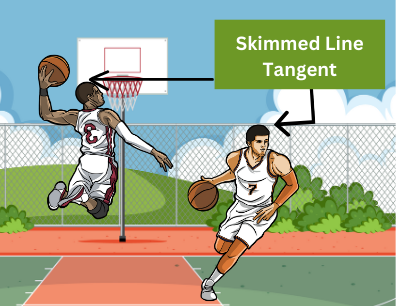
The skimmed line tangent is the one that I encounter most often and have to be most aware of. This occurs when an object or figure is positioned in nearly-exact or exact alignment with a line in your watercolor scene - like that of a fence or a window or lamppost. In the above example, the basketball player on the right should be reconfigured to be below the fence (or the fence lifted up), and the head of the player on the left should be moved up so it does not align perfectly with the hoop.
How to Avoid Tangents in your Watercolor Paintings
The first step in avoiding tangents is to be aware of them. As with most artistic rules, they aren't always absolutely detrimental to a painting. But if you're aware of your tendencies toward certain tangents when you create your watercolor drawing, you can stop them from being a problem before it's too late.
If something begins to feel a little "off" with your painting, there can be lots to consider - value, proportion, color mixing, etc. Add to these consideration tangents - and composition overall. Being aware of tangents will help you to make small changes in your watercolor painting that will make a big difference in the end.
Related Blogs
Composition in Watercolor - 3 Tips to Create Captivating Art
Watercolor Composition - Simple Tactic that Makes a HUGE Difference
Top 3 Problems with Your Watercolor Painting - and How to Fix Them
